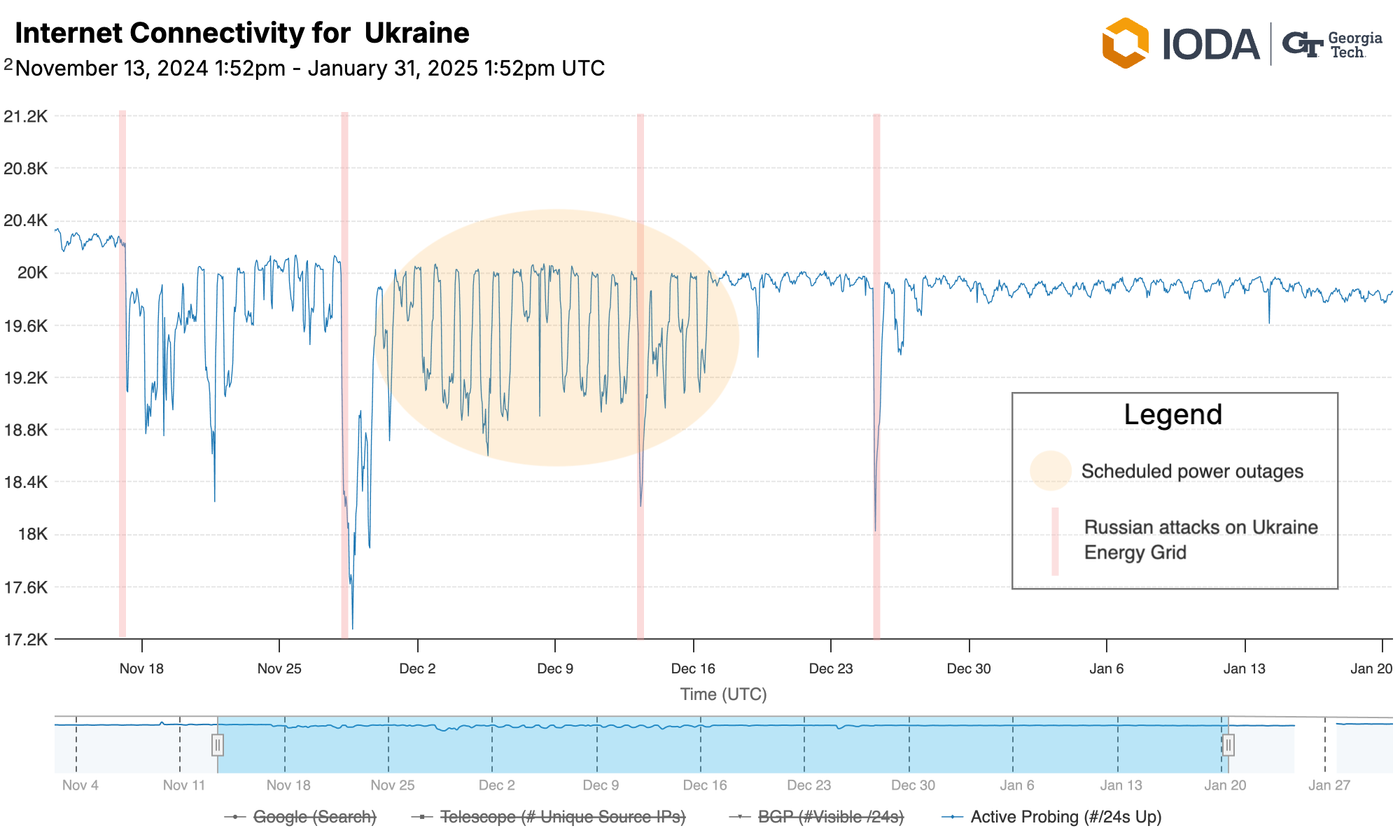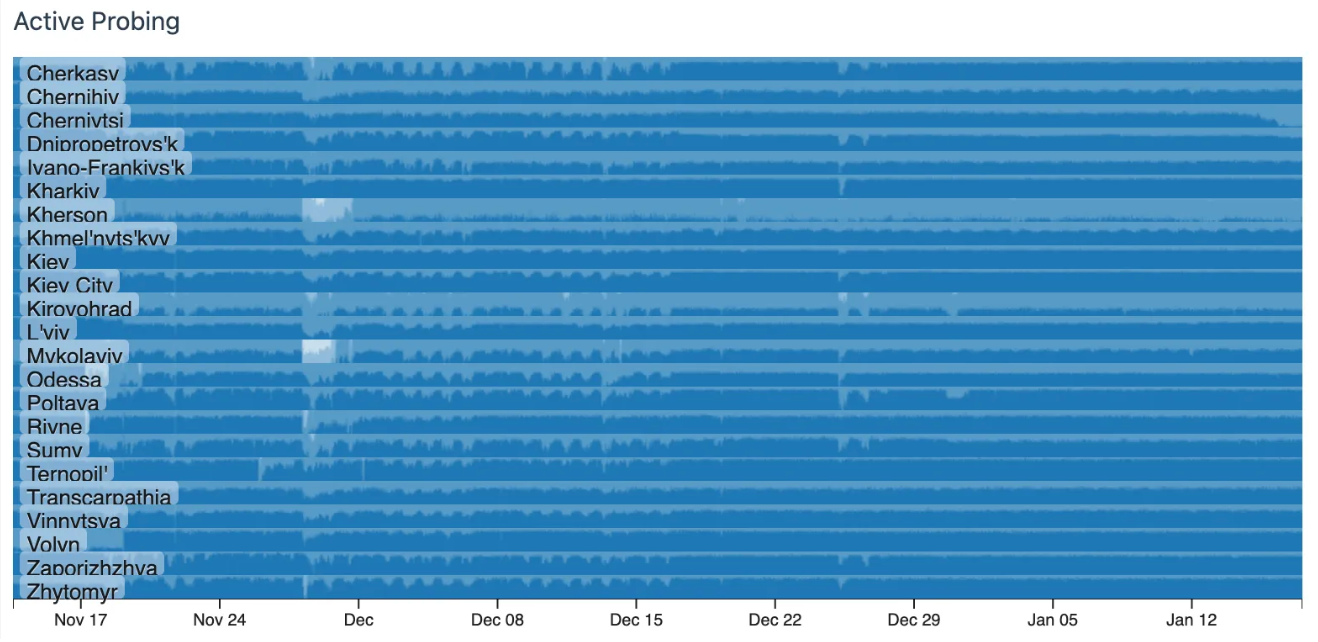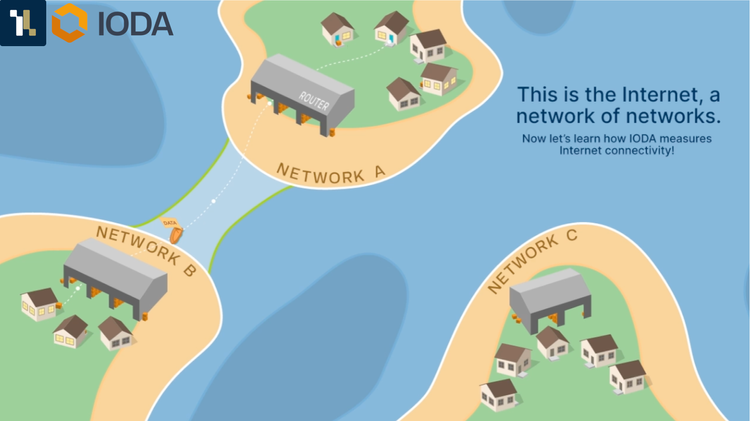How Russia's Recent Attacks on Ukraine's Energy Grid Impacted its Internet Connectivity
From November 2024 to January 2025, Russia attacked Ukraine's energy grid five times: November 17, November 28, December 13, December 25, and January 15. As cold weather increases, the attacks aimed to stifle military operations and inevitably impact civilian populations. The harm caused by Russia's attacks on Ukraine's energy system has led the country to schedule planned power outages to restore and reserve energy.
This isn't the first time Ukraine has experienced such attacks in the almost three-year conflict. From the start of Russia's invasion of Ukraine in 2022, the country endured numerous attacks on its energy grid system.
IODA, the Internet Outage Detection and Analysis project led by Internet measurement researchers at Georgia Tech's Internet Intelligence Lab, shows data on Internet outages in Ukraine due to the attacks and planned power outages. The IODA project's data measures the connectivity of Internet infrastructure; these methods do not always capture cellular network connectivity.
In times of conflict, the IODA team interprets drops in Active Probing to be related to the physical destruction of network or electrical grid infrastructure and emigration, which can lead to the powering down of network infrastructure. Additionally, power outages affecting Internet connectivity often appear most prominently in IODA's Active Probing signal.
IODA data is shown alongside a short analysis below.

The graph above shows Active Probing signals for Ukraine from November to January. The levels of Active Probing represent the number of networks responding to IODA's pings. Networks are designed to respond; when they do not, they are no longer connected to the global Internet.
The graph above shows Ukraine's Internet connectivity from November 2024 to January 2025. The country experienced a drop in Active Probing on November 17 and November 28, coinciding with Russia's power grid attacks in Ukraine that month.
IODA data in the graph also shows a drop in Active Probing on December 13 and December 25, when media reports said Russia attacked Ukraine's power grid on both days.
On January 15, Ukraine's power grid endured another attack from Russia, resulting in a smaller drop in the Active Probing signal than the prior attacks in November and December 2024.
Other dips in Active Probing signals from November to January were purportedly linked to planned outages in Ukraine's energy sector. Active Probing in Ukraine has not yet recovered to levels before November 15.
These country-level drops in connectivity are also visible at the Oblast and network levels. Below, we show Oblast-level connectivity specifically for Ukrtelnet (AS6849). The graph shows the affected Oblasts, with Kherson and Mykolaviv being heavily affected by the November 28 attack. IODA also picks up similar patterns across providers, including Kyivstar (KSNET AS15895) and Triolan (AS13188).

For media covering this story, please contact Amanda Meng, Zachary Bischof, or Alberto Dainotti via ioda-info@cc.gatech.edu for comments and analysis.
About IODA
IODA monitors the Internet in near-realtime to identify Internet outages affecting countries, subnational regions, and networks. Visit IODA for more information.


